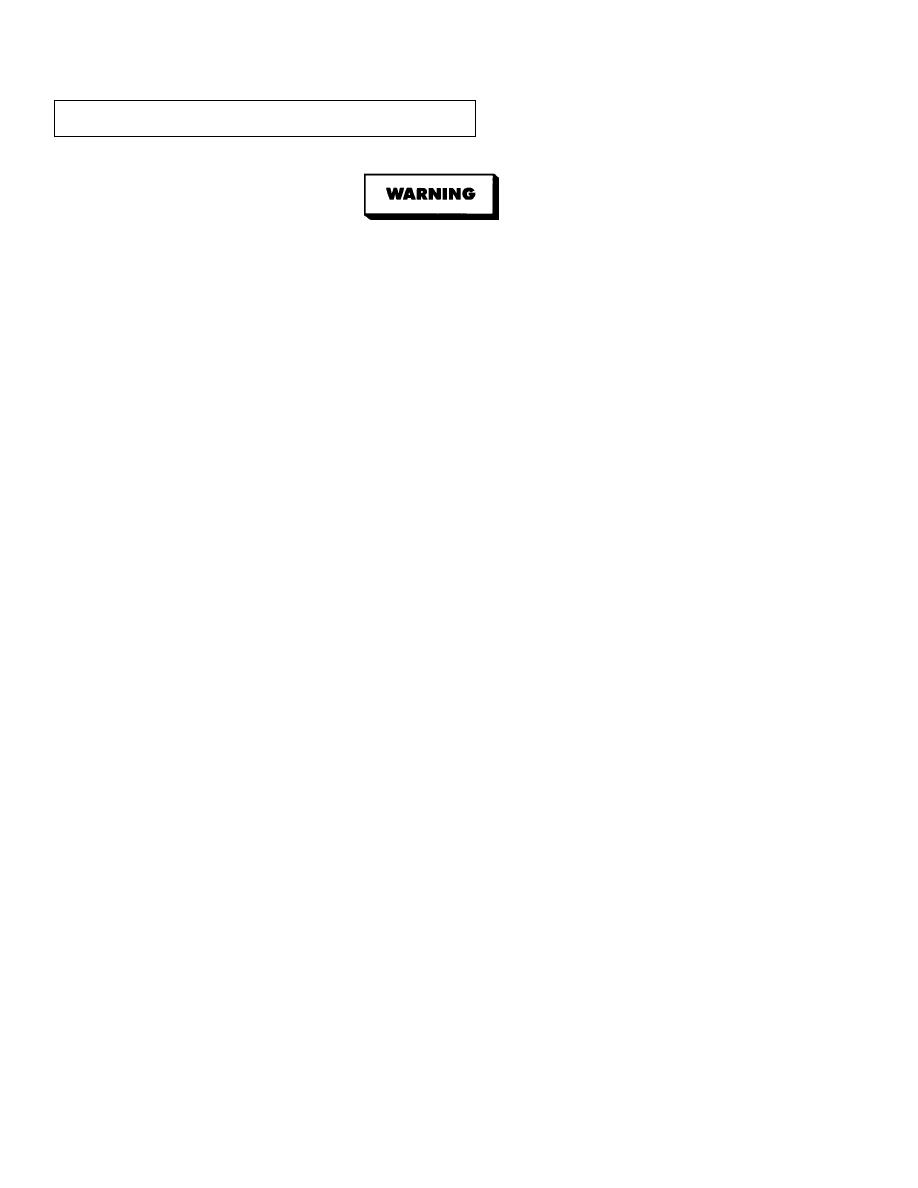 |
|||
|
|
|||
|
|
|||
| ||||||||||
|
|
 TM 9-2320-364-20-1
2-6. SERVICE BEFORE OPERATION (CONT).
Do not remove the radiator cap when the engine is hot; steam and hot coolant can escape
and burn personnel.
Use extreme care when removing the radiator pressure cap. Sudden release of pressure
can cause a steam flash which could seriously injure personnel. Slowly loosen cap to the
first stop to relieve pressure before removing cap completely. After opening, securely
tighten cap.
Use a clean, thick waste cloth or like material to remove radiator pressure cap. Avoid
using gloves. If hot water soaks through gloves, personnel could be burned.
(7)
Check radiator coolant. Check if solution is adequate for expected climatic conditions. Refer to
TB 750-651 for preparation of antifreeze solutions. Put tag near filler cap with type of antifreeze and
degree of protection written on tag.
c.
Special Service Instructions.
(1)
Truck Body and Sheet Metal Inspection.
(a)
Inspect body and sheet metal for evidence of damage during shipment.
(b)
Check doors, latches and hinges on compartments for proper operation.
(c)
Check mounting hardware and tighten as necessary.
(2)
Truck Cab Inspection.
(a)
Inspect cab for evidence of damage during shipment.
(b)
Inspect windshields and window glass for cracks or other damage.
(c)
Check door latches, hinges and windows for proper operation.
(d)
Check seats and seat belts to ensure they are securely installed and that operator's seat adjustments
are functioning properly.
(3)
Engine Inspection.
(a)
Remove any seals, plugs or tape used to seal air inlets and ports on the engine during shipping.
(b)
Check crankcase oil level with dipstick.
(c)
Examine air cleaner element for dirty or restricted condition.
(d)
Inspect engine and cooling hose connections for evidence of leakage.
(e)
Clean away any obstruction of cooling air flow to radiator.
|
|
Privacy Statement - Press Release - Copyright Information. - Contact Us |